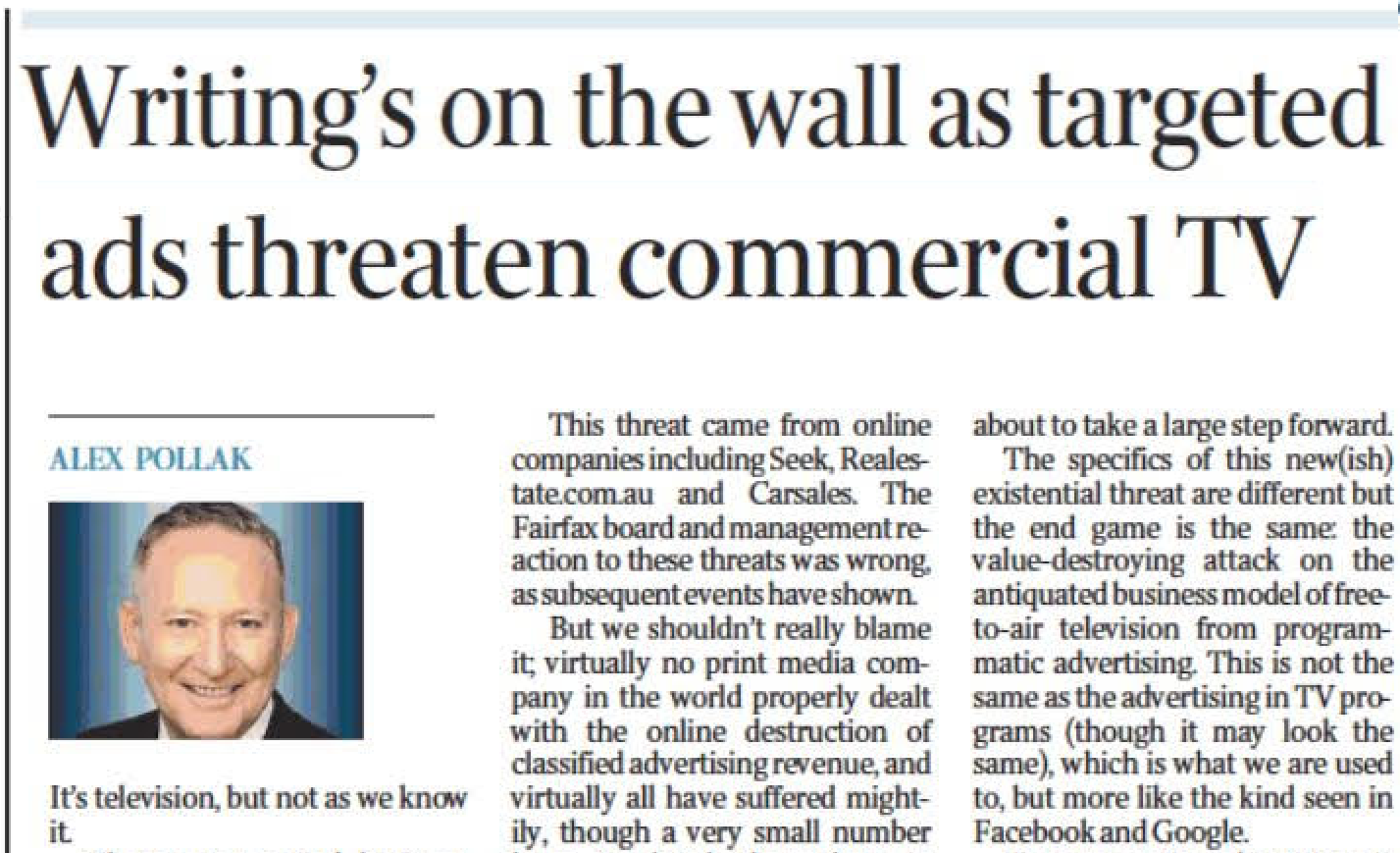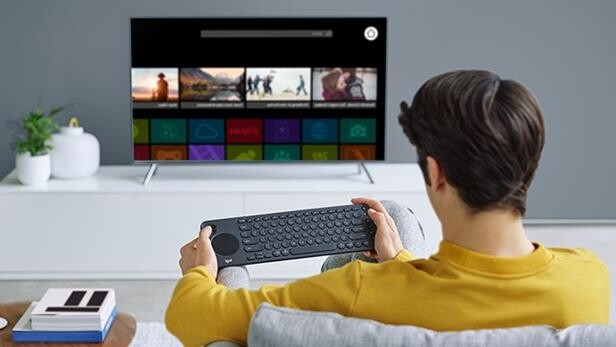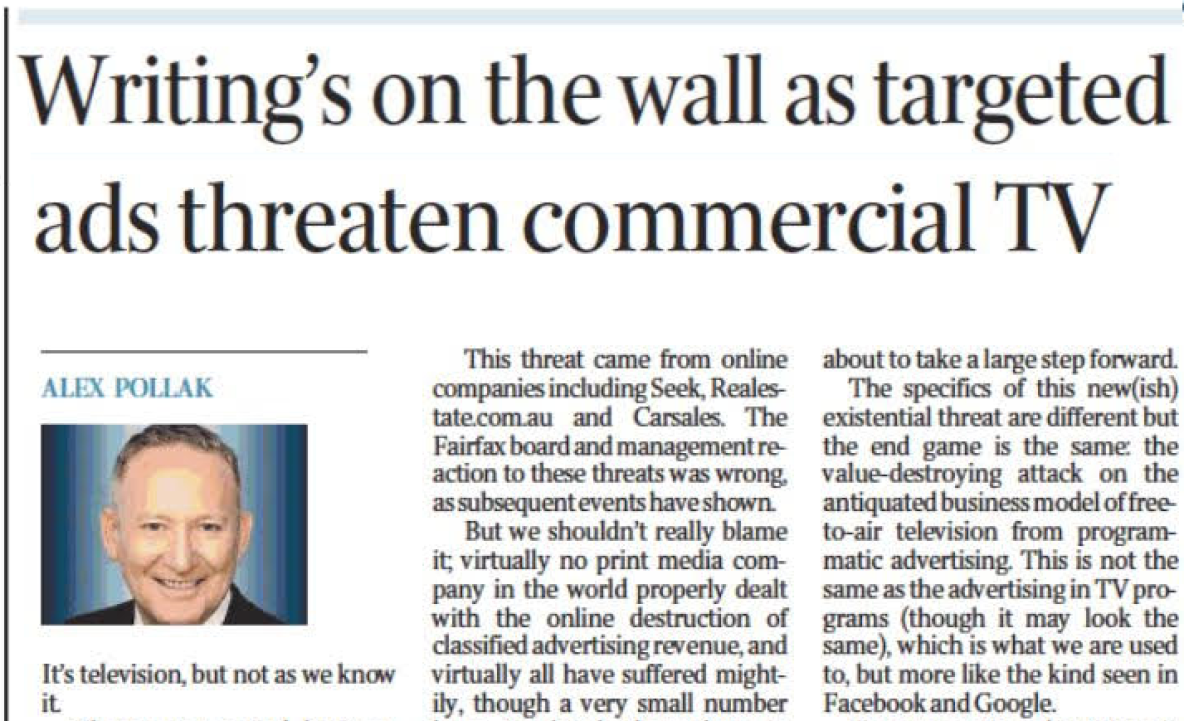

By Alex Pollak, CIO Loftus Peak (originally published in The Australian – 29/04/19)
Disruption doesn’t end with media. It is ripping through the global economy.
It’s television, but not as we know it.
There was a period, lasting a few years, when as an operative of Macquarie Bank I spent a fair chunk of time publicly opposed to the defensive strategy of John Fairfax in its response to the emerging classified advertising threat to The Sydney Morning Herald/ The Age.
This threat came from online companies including Seek, Realestate.com.au and Carsales. The Fairfax board and management reaction to these threats was wrong, as subsequent events have shown.
But we shouldn’t really blame it; virtually no print media company in the world properly dealt with the online destruction of classified advertising revenue, and virtually all have suffered mightily, though a very small number have insulated themselves in other ways (by investing well, like Naspers in South Africa, which took an early stake in Tencent).
What has happened to print is now happening to TV companies such as Seven, Nine and Ten, and the ABC in Australia, as well TV groups in other countries. But it is about to take a large step forward.
Programmatic advertising is to TV companies what Seek and Carsales were to Print media
The specifics of this new(ish) existential threat are different but the end game is the same: the value-destroying attack on the antiquated business model of free-to-air television from programmatic advertising. This is not the same as the advertising in TV programs (though it may look the same), which is what we are used to, but more like the kind seen in Facebook and Google.
Programmatic advertising is advertising placed algorithmically, based on knowledge of who you are, including your age, hobbies and marital status — all the things that Facebook, for example, already knows.
The existing TV commercial model is under threat because networks don’t actually know who is seeing their ads (they never have) because TV sets don’t have the kinds of two-way connectivity that comes from an operating system, like those found in mobile phones and computers.
But that is all changing. Almost 70 per cent of television sets being made are smart, meaning they come with the (Google) Android operating system, or one of the others such as Samsung’s Tizen, or that of HTC, or Amazon’s Fire. And they connect through Wi-Fi to the internet using those operating systems.
And it’s the operating systems that create the environment for the kind of targeted, interactive advertising that is driving the share prices of Amazon and Google, but will shortly attack the traditional advertising model of TV.
This is a fundamental shift. For those used to switching on a TV to find it broadcasting on Seven or Nine, or indeed Foxtel, new smart TVs are set up to present a home screen that is app first, not channel first — meaning that they may be offered a clip/program streamed from a media company — any media company — somewhere in the world. Not just one from a commercial TV network in Australia.
Rupert Murdoch, Australia’s largest media export, worked this out last year, when he sold his Fox studios to Disney for $US70 billion. It is a struggle to understand why Disney bothered. Both these companies rely on revenues from the sale of programming (TV and movies) to cable companies (like Foxtel). And these revenues have been under threat from streamers Netflix and Amazon Prime, but are now also coming under threat from programmatic advertising companies.
Murdoch has said that he saw this future, and realised his company could not compete. It was television, but not as he knew it. So he sold. Wise move.
Disruption doesn’t just end with TVs having an operating systems and programmatic advertising
But disruption doesn’t end with media. Neither is it over now that everyone has a mobile phone and can use Google. It is ripping through the global economy.
Cars, for example, for which battery power is the way forward, are cleaner depending on where the energy is sourced. And cheaper — they have fewer parts; and faster. The flow-on effects from electric cars are huge, like say, oil— the head of Saudi Arabia’s Aramco was reported to have said that the value of the country’s vast oil reserves will decrease significantly in coming years.
Telecommunications companies, which should have embraced disruption since their business was fundamentally about digital connectivity, failed to see the importance of mobile communications, and, like Telstra, are being left behind.
Locally, in retail, Woolworths and Coles are optimised for sales in shopping centres. A significant move by these companies online simply cannibalises their existing store sales without reducing the fixed costs of those stores, cutting earnings.
And banking? What will the banks do with their heavy management structures built to corral people during different credit cycles at a time when the world’s understanding of money is that it is truly a digital commodity?
The massive shift that is taking place globally into disruptive companies is pushing up the price — but investing in the alternatives, even for gutsy deep-value players, does not look like it will stack up for some time.
Share this Post


